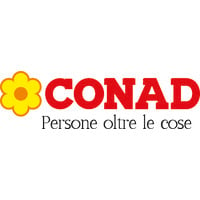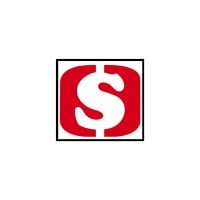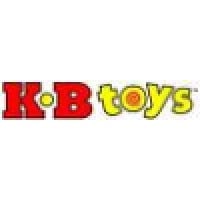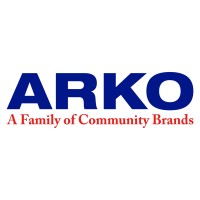
Conad Company Cyber Security Posture
conad.itPERSONE OLTRE LE COSE. Conad è una storia fatta di imprenditori, commercianti, clienti e comunità. Un lungo viaggio che inizia nella metà degli anni ’60: nel 1962 nasce a Bologna il Consorzio Nazionale Dettaglianti, una società cooperativa a responsabilità limitata costituita da 14 gruppi d’acquisto e 420 soci dettaglianti. Conad rappresenta un’azienda che ha sempre promosso l’associazionismo, modello che ancora oggi è il tratto distintivo nel panorama della grande distribuzione. Il nostro successo è anche quello raggiunto grazie imprenditori che hanno scelto liberamente di mettersi assieme nella consapevolezza del ruolo centrale della persona, delle sue ambizioni e dell’importanza di valorizzarne le potenzialità. La nostra offerta nasce dal nostro costante ascolto della comunità con la quale, attraverso la nostra prossimità al territorio, dialoghiamo ogni giorno per conoscerne le esigenze e i bisogni. 6 cooperative, 2.300 soci e i 3.174 punti vendita: questa è Conad oggi. Un’azienda che da sempre mette in primo piano le persone, oltre le cose.
Conad Company Details
conad
10,001+ employees
0
452
Retail
conad.it
23
CON_1376089
In-progress
Between 800 and 900
This score is AI-generated and less favored by cyber insurers, who prefer the TPRM score.
 Conad Global Score
Conad Global Score.png)

Conad Company Scoring based on AI Models
| Model Name | Date | Description | Current Score Difference | Score |
|---|---|---|---|---|
| AVERAGE-Industry | 03-12-2025 | This score represents the average cybersecurity rating of companies already scanned within the same industry. It provides a benchmark to compare an individual company's security posture against its industry peers. | N/A | Between 800 and 900 |
Conad Company Cyber Security News & History
| Entity | Type | Severity | Impact | Seen | Url ID | Details | View |
|---|
Conad Company Subsidiaries

PERSONE OLTRE LE COSE. Conad è una storia fatta di imprenditori, commercianti, clienti e comunità. Un lungo viaggio che inizia nella metà degli anni ’60: nel 1962 nasce a Bologna il Consorzio Nazionale Dettaglianti, una società cooperativa a responsabilità limitata costituita da 14 gruppi d’acquisto e 420 soci dettaglianti. Conad rappresenta un’azienda che ha sempre promosso l’associazionismo, modello che ancora oggi è il tratto distintivo nel panorama della grande distribuzione. Il nostro successo è anche quello raggiunto grazie imprenditori che hanno scelto liberamente di mettersi assieme nella consapevolezza del ruolo centrale della persona, delle sue ambizioni e dell’importanza di valorizzarne le potenzialità. La nostra offerta nasce dal nostro costante ascolto della comunità con la quale, attraverso la nostra prossimità al territorio, dialoghiamo ogni giorno per conoscerne le esigenze e i bisogni. 6 cooperative, 2.300 soci e i 3.174 punti vendita: questa è Conad oggi. Un’azienda che da sempre mette in primo piano le persone, oltre le cose.
Access Data Using Our API

Get company history
.png)
Conad Cyber Security News
Encryption Is Now Essential, Says Top U.S. Cybersecurity Agency
CISA reiterated its call for Americans, and businesses, who are concerned about the security of their conversations to use end-to-end encrypted communications.
MSP cybersecurity news digest, January 21, 2025
Microsoft's January 2025 Patch Tuesday includes fixes for 159 security vulnerabilities, among them eight zero-day flaws, three of which are ...

Conad Similar Companies

The Shoprite Group of Companies
The Shoprite Group is the largest retailer in Africa, known for its iconic supermarket brands Shoprite, Checkers and Usave. Starting with just eight stores and 400 employees in 1979, our business is now the continent’s industry leader by market capitalisation, sales, profit, and number of employees

KB Toys
As recent as 2004, KB Toys was the nation’s largest mall and internet-based toy retailer—with 1,300 stores in 50 states (plus Guam and Puerto Rico), over 20,000 employees and nearly $2billion in annual sales. Owned by Bain Capital and facing a liquidity crunch, KB Toys filed voluntary petitions for

ARKO Corp. (NASDAQ: ARKO)
ARKO Corp. (Nasdaq: ARKO) is a Fortune 500 company that owns 100% of GPM Investments, LLC and is one of the largest operators of convenience stores and wholesalers of fuel in the United States. Based in Richmond, VA, we operate A Family of Community Brands that offer delicious, prepared foods, beer,

Fozzy Group
Fozzy Group is one of the largest trade industrial groups in Ukraine and one of the leading Ukrainian retailers, with over 700 outlets all around the country. Besides retail, the group's businesses include food production, and restaurants. Fozzy Group is introducing modern solutions in all areas

Bunnings
We are the leading retailer of home improvement and outdoor living products in Australia & New Zealand and a major supplier to project builders, commercial tradespeople and the housing industry. Our ambition is to provide our customers with the widest range of home improvement products in accordanc

Marisa S.A.
Marisa S.A. is the largest Brazilian department store chain specialized in women’s clothing based on the number of stores in Brazil. The Company’s business strategy and operations focus primarily on middle-lower income women between the ages of 20 and 35. The Company’s target customers are members o

Frequently Asked Questions (FAQ) on Cybersecurity Incidents
Conad CyberSecurity History Information
Total Incidents: According to Rankiteo, Conad has faced 0 incidents in the past.
Incident Types: As of the current reporting period, Conad has not encountered any cybersecurity incidents.
Total Financial Loss: The total financial loss from these incidents is estimated to be {total_financial_loss}.
Cybersecurity Posture: The company's overall cybersecurity posture is described as PERSONE OLTRE LE COSE. Conad è una storia fatta di imprenditori, commercianti, clienti e comunità. Un lungo viaggio che inizia nella metà degli anni ’60: nel 1962 nasce a Bologna il Consorzio Nazionale Dettaglianti, una società cooperativa a responsabilità limitata costituita da 14 gruppi d’acquisto e 420 soci dettaglianti. Conad rappresenta un’azienda che ha sempre promosso l’associazionismo, modello che ancora oggi è il tratto distintivo nel panorama della grande distribuzione. Il nostro successo è anche quello raggiunto grazie imprenditori che hanno scelto liberamente di mettersi assieme nella consapevolezza del ruolo centrale della persona, delle sue ambizioni e dell’importanza di valorizzarne le potenzialità. La nostra offerta nasce dal nostro costante ascolto della comunità con la quale, attraverso la nostra prossimità al territorio, dialoghiamo ogni giorno per conoscerne le esigenze e i bisogni. 6 cooperative, 2.300 soci e i 3.174 punti vendita: questa è Conad oggi. Un’azienda che da sempre mette in primo piano le persone, oltre le cose..
Detection and Response: The company detects and responds to cybersecurity incidents through {description_of_detection_and_response_process}.
Incident Details
Incident 1: Ransomware Attack
Title: {Incident_Title}
Description: {Brief_description_of_the_incident}
Date Detected: {Detection_Date}
Date Publicly Disclosed: {Disclosure_Date}
Date Resolved: {Resolution_Date}
Type: {Type_of_Attack}
Attack Vector: {Attack_Vector}
Vulnerability Exploited: {Vulnerability}
Threat Actor: {Threat_Actor}
Motivation: {Motivation}
Incident 2: Data Breach
Title: {Incident_Title}
Description: {Brief_description_of_the_incident}
Date Detected: {Detection_Date}
Date Publicly Disclosed: {Disclosure_Date}
Date Resolved: {Resolution_Date}
Type: {Type_of_Attack}
Attack Vector: {Attack_Vector}
Vulnerability Exploited: {Vulnerability}
Threat Actor: {Threat_Actor}
Motivation: {Motivation}
Common Attack Types: As of now, the company has not encountered any reported incidents involving common cyberattacks.
Identification of Attack Vectors: The company identifies the attack vectors used in incidents through {description_of_identification_process}.
Impact of the Incidents
Incident 1: Ransomware Attack
Financial Loss: {Financial_Loss}
Data Compromised: {Data_Compromised}
Systems Affected: {Systems_Affected}
Downtime: {Downtime}
Operational Impact: {Operational_Impact}
Conversion Rate Impact: {Conversion_Rate_Impact}
Revenue Loss: {Revenue_Loss}
Customer Complaints: {Customer_Complaints}
Brand Reputation Impact: {Brand_Reputation_Impact}
Legal Liabilities: {Legal_Liabilities}
Identity Theft Risk: {Identity_Theft_Risk}
Payment Information Risk: {Payment_Information_Risk}
Incident 2: Data Breach
Financial Loss: {Financial_Loss}
Data Compromised: {Data_Compromised}
Systems Affected: {Systems_Affected}
Downtime: {Downtime}
Operational Impact: {Operational_Impact}
Conversion Rate Impact: {Conversion_Rate_Impact}
Revenue Loss: {Revenue_Loss}
Customer Complaints: {Customer_Complaints}
Brand Reputation Impact: {Brand_Reputation_Impact}
Legal Liabilities: {Legal_Liabilities}
Identity Theft Risk: {Identity_Theft_Risk}
Payment Information Risk: {Payment_Information_Risk}
Average Financial Loss: The average financial loss per incident is {average_financial_loss}.
Commonly Compromised Data Types: The types of data most commonly compromised in incidents are {list_of_commonly_compromised_data_types}.
Incident 1: Ransomware Attack
Entity Name: {Entity_Name}
Entity Type: {Entity_Type}
Industry: {Industry}
Location: {Location}
Size: {Size}
Customers Affected: {Customers_Affected}
Incident 2: Data Breach
Entity Name: {Entity_Name}
Entity Type: {Entity_Type}
Industry: {Industry}
Location: {Location}
Size: {Size}
Customers Affected: {Customers_Affected}
Response to the Incidents
Incident 1: Ransomware Attack
Incident Response Plan Activated: {Yes/No}
Third Party Assistance: {Yes/No}
Law Enforcement Notified: {Yes/No}
Containment Measures: {Containment_Measures}
Remediation Measures: {Remediation_Measures}
Recovery Measures: {Recovery_Measures}
Communication Strategy: {Communication_Strategy}
Adaptive Behavioral WAF: {Adaptive_Behavioral_WAF}
On-Demand Scrubbing Services: {On_Demand_Scrubbing_Services}
Network Segmentation: {Network_Segmentation}
Enhanced Monitoring: {Enhanced_Monitoring}
Incident 2: Data Breach
Incident Response Plan Activated: {Yes/No}
Third Party Assistance: {Yes/No}
Law Enforcement Notified: {Yes/No}
Containment Measures: {Containment_Measures}
Remediation Measures: {Remediation_Measures}
Recovery Measures: {Recovery_Measures}
Communication Strategy: {Communication_Strategy}
Adaptive Behavioral WAF: {Adaptive_Behavioral_WAF}
On-Demand Scrubbing Services: {On_Demand_Scrubbing_Services}
Network Segmentation: {Network_Segmentation}
Enhanced Monitoring: {Enhanced_Monitoring}
Incident Response Plan: The company's incident response plan is described as {description_of_incident_response_plan}.
Third-Party Assistance: The company involves third-party assistance in incident response through {description_of_third_party_involvement}.
Data Breach Information
Incident 2: Data Breach
Type of Data Compromised: {Type_of_Data}
Number of Records Exposed: {Number_of_Records}
Sensitivity of Data: {Sensitivity_of_Data}
Data Exfiltration: {Yes/No}
Data Encryption: {Yes/No}
File Types Exposed: {File_Types}
Personally Identifiable Information: {Yes/No}
Prevention of Data Exfiltration: The company takes the following measures to prevent data exfiltration: {description_of_prevention_measures}.
Handling of PII Incidents: The company handles incidents involving personally identifiable information (PII) through {description_of_handling_process}.
Ransomware Information
Incident 1: Ransomware Attack
Ransom Demanded: {Ransom_Amount}
Ransom Paid: {Ransom_Paid}
Ransomware Strain: {Ransomware_Strain}
Data Encryption: {Yes/No}
Data Exfiltration: {Yes/No}
Ransom Payment Policy: The company's policy on paying ransoms in ransomware incidents is described as {description_of_ransom_payment_policy}.
Data Recovery from Ransomware: The company recovers data encrypted by ransomware through {description_of_data_recovery_process}.
Regulatory Compliance
Incident 1: Ransomware Attack
Regulations Violated: {Regulations_Violated}
Fines Imposed: {Fines_Imposed}
Legal Actions: {Legal_Actions}
Regulatory Notifications: {Regulatory_Notifications}
Incident 2: Data Breach
Regulations Violated: {Regulations_Violated}
Fines Imposed: {Fines_Imposed}
Legal Actions: {Legal_Actions}
Regulatory Notifications: {Regulatory_Notifications}
Regulatory Frameworks: The company complies with the following regulatory frameworks regarding cybersecurity: {list_of_regulatory_frameworks}.
Ensuring Regulatory Compliance: The company ensures compliance with regulatory requirements through {description_of_compliance_measures}.
Lessons Learned and Recommendations
Incident 1: Ransomware Attack
Lessons Learned: {Lessons_Learned}
Incident 2: Data Breach
Lessons Learned: {Lessons_Learned}
Incident 1: Ransomware Attack
Recommendations: {Recommendations}
Incident 2: Data Breach
Recommendations: {Recommendations}
Key Lessons Learned: The key lessons learned from past incidents are {list_of_key_lessons_learned}.
Implemented Recommendations: The company has implemented the following recommendations to improve cybersecurity: {list_of_implemented_recommendations}.
References
Additional Resources: Stakeholders can find additional resources on cybersecurity best practices at {list_of_additional_resources}.
Investigation Status
Incident 1: Ransomware Attack
Investigation Status: {Investigation_Status}
Incident 2: Data Breach
Investigation Status: {Investigation_Status}
Communication of Investigation Status: The company communicates the status of incident investigations to stakeholders through {description_of_communication_process}.
Stakeholder and Customer Advisories
Incident 1: Ransomware Attack
Stakeholder Advisories: {Stakeholder_Advisories}
Customer Advisories: {Customer_Advisories}
Incident 2: Data Breach
Stakeholder Advisories: {Stakeholder_Advisories}
Customer Advisories: {Customer_Advisories}
Advisories Provided: The company provides the following advisories to stakeholders and customers following an incident: {description_of_advisories_provided}.
Initial Access Broker
Incident 1: Ransomware Attack
Entry Point: {Entry_Point}
Reconnaissance Period: {Reconnaissance_Period}
Backdoors Established: {Backdoors_Established}
High Value Targets: {High_Value_Targets}
Data Sold on Dark Web: {Yes/No}
Incident 2: Data Breach
Entry Point: {Entry_Point}
Reconnaissance Period: {Reconnaissance_Period}
Backdoors Established: {Backdoors_Established}
High Value Targets: {High_Value_Targets}
Data Sold on Dark Web: {Yes/No}
Monitoring and Mitigation of Initial Access Brokers: The company monitors and mitigates the activities of initial access brokers through {description_of_monitoring_and_mitigation_measures}.
Post-Incident Analysis
Incident 1: Ransomware Attack
Root Causes: {Root_Causes}
Corrective Actions: {Corrective_Actions}
Incident 2: Data Breach
Root Causes: {Root_Causes}
Corrective Actions: {Corrective_Actions}
Post-Incident Analysis Process: The company's process for conducting post-incident analysis is described as {description_of_post_incident_analysis_process}.
Corrective Actions Taken: The company has taken the following corrective actions based on post-incident analysis: {list_of_corrective_actions_taken}.
Additional Questions
General Information
Ransom Payment History: The company has {paid/not_paid} ransoms in the past.
Last Ransom Demanded: The amount of the last ransom demanded was {last_ransom_amount}.
Last Attacking Group: The attacking group in the last incident was {last_attacking_group}.
Incident Details
Most Recent Incident Detected: The most recent incident detected was on {most_recent_incident_detected_date}.
Most Recent Incident Publicly Disclosed: The most recent incident publicly disclosed was on {most_recent_incident_publicly_disclosed_date}.
Most Recent Incident Resolved: The most recent incident resolved was on {most_recent_incident_resolved_date}.
Impact of the Incidents
Highest Financial Loss: The highest financial loss from an incident was {highest_financial_loss}.
Most Significant Data Compromised: The most significant data compromised in an incident was {most_significant_data_compromised}.
Most Significant System Affected: The most significant system affected in an incident was {most_significant_system_affected}.
Response to the Incidents
Third-Party Assistance in Most Recent Incident: The third-party assistance involved in the most recent incident was {third_party_assistance_in_most_recent_incident}.
Containment Measures in Most Recent Incident: The containment measures taken in the most recent incident were {containment_measures_in_most_recent_incident}.
Data Breach Information
Most Sensitive Data Compromised: The most sensitive data compromised in a breach was {most_sensitive_data_compromised}.
Number of Records Exposed: The number of records exposed in the most significant breach was {number_of_records_exposed}.
Ransomware Information
Highest Ransom Demanded: The highest ransom demanded in a ransomware incident was {highest_ransom_demanded}.
Highest Ransom Paid: The highest ransom paid in a ransomware incident was {highest_ransom_paid}.
Regulatory Compliance
Highest Fine Imposed: The highest fine imposed for a regulatory violation was {highest_fine_imposed}.
Most Significant Legal Action: The most significant legal action taken for a regulatory violation was {most_significant_legal_action}.
Lessons Learned and Recommendations
Most Significant Lesson Learned: The most significant lesson learned from past incidents was {most_significant_lesson_learned}.
Most Significant Recommendation Implemented: The most significant recommendation implemented to improve cybersecurity was {most_significant_recommendation_implemented}.
References
Most Recent Source: The most recent source of information about an incident is {most_recent_source}.
Most Recent URL for Additional Resources: The most recent URL for additional resources on cybersecurity best practices is {most_recent_url}.
Investigation Status
Current Status of Most Recent Investigation: The current status of the most recent investigation is {current_status_of_most_recent_investigation}.
Stakeholder and Customer Advisories
Most Recent Stakeholder Advisory: The most recent stakeholder advisory issued was {most_recent_stakeholder_advisory}.
Most Recent Customer Advisory: The most recent customer advisory issued was {most_recent_customer_advisory}.
Initial Access Broker
Most Recent Entry Point: The most recent entry point used by an initial access broker was {most_recent_entry_point}.
Most Recent Reconnaissance Period: The most recent reconnaissance period for an incident was {most_recent_reconnaissance_period}.
Post-Incident Analysis
Most Significant Root Cause: The most significant root cause identified in post-incident analysis was {most_significant_root_cause}.
Most Significant Corrective Action: The most significant corrective action taken based on post-incident analysis was {most_significant_corrective_action}.
What Do We Measure?
















Every week, Rankiteo analyzes billions of signals to give organizations a sharper, faster view of emerging risks. With deeper, more actionable intelligence at their fingertips, security teams can outpace threat actors, respond instantly to Zero-Day attacks, and dramatically shrink their risk exposure window.
These are some of the factors we use to calculate the overall score:
Identify exposed access points, detect misconfigured SSL certificates, and uncover vulnerabilities across the network infrastructure.
Gain visibility into the software components used within an organization to detect vulnerabilities, manage risk, and ensure supply chain security.
Monitor and manage all IT assets and their configurations to ensure accurate, real-time visibility across the company's technology environment.
Leverage real-time insights on active threats, malware campaigns, and emerging vulnerabilities to proactively defend against evolving cyberattacks.




